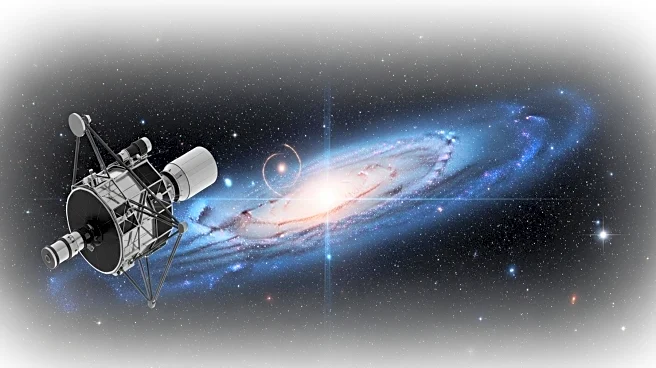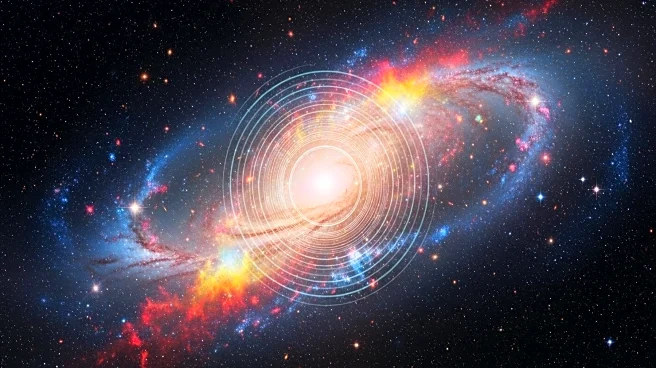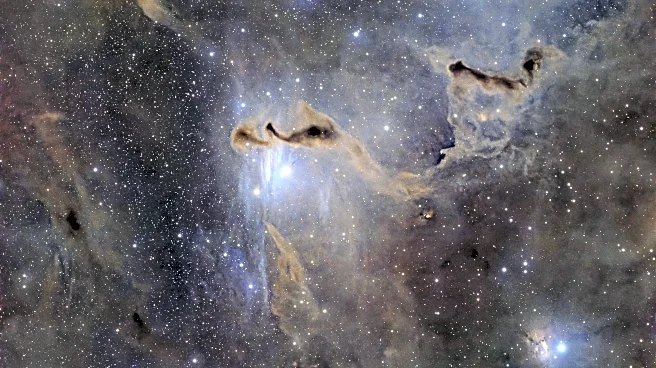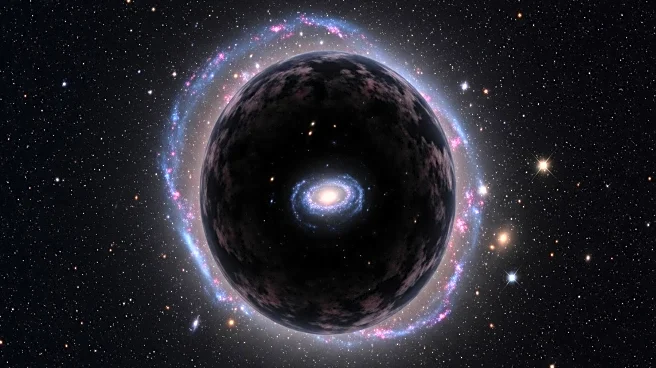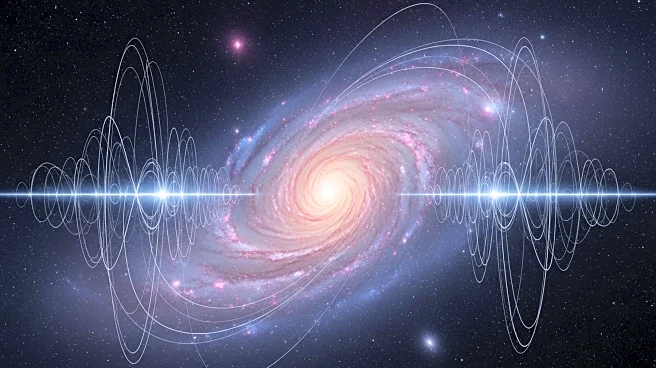What's Happening?
An international team of astronomers has conducted detailed multicolor photometric and spectroscopic observations of SN 2022xlp, a rare type Iax supernova. The supernova was discovered in 2022 in the galaxy NGC 3938, located approximately 72.2 million light years away. Type Iax supernovae are a rare subclass of type Ia supernovae, characterized by leaving behind a remnant star rather than completely dispersing the white dwarf. SN 2022xlp reached a peak absolute brightness of -16.04 mag, making it the second intermediate-luminosity Iax supernova observed in detail. The observational campaign, which began six days after the explosion and lasted 73 days, aimed to provide insights into the properties of this supernova. The study revealed rapid color evolution due to decreasing photospheric temperature and estimated the production of radioactive nickel and explosion energy.
Why It's Important?
The study of SN 2022xlp is significant as it provides valuable insights into the nature of type Iax supernovae, which are crucial for understanding stellar evolution and the dynamics of galaxies. These observations help astronomers refine models of supernova behavior and contribute to the broader understanding of cosmic phenomena. The findings regarding the luminosity and color evolution of SN 2022xlp can aid in distinguishing between different types of supernovae, enhancing the accuracy of astronomical classifications. Additionally, understanding the production of radioactive elements in supernovae has implications for the study of chemical enrichment in the universe.
What's Next?
Future research may focus on comparing SN 2022xlp with other type Iax supernovae to identify common characteristics and differences. Continued observations could lead to a better understanding of the mechanisms behind these rare stellar explosions. Astronomers may also explore the implications of these findings for the study of binary star systems and the role of white dwarfs in supernova events. Collaborative efforts using ground-based and space telescopes will likely continue to uncover more details about the behavior and impact of type Iax supernovae.
Beyond the Headlines
The study of SN 2022xlp highlights the importance of international collaboration in astronomy, as researchers from various institutions contribute to a comprehensive understanding of cosmic events. The ethical dimension of scientific research is underscored by the commitment to sharing findings openly, fostering a global scientific community. Long-term, these observations may influence the development of new technologies and methodologies for studying distant astronomical phenomena, potentially leading to breakthroughs in astrophysics.

